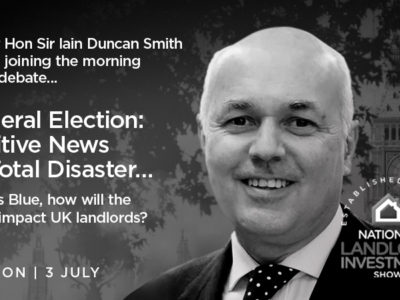- Annual house price growth rose to 11.0% from 10.5% in July
- Prices up 2.1% month-on-month, the second largest gain in 15 years
- Average house price nudges towards £250k mark
| Headlines | Aug-21 | Jul-21 |
|---|---|---|
| Monthly Index* | 494.5 | 484.4 |
| Monthly Change* | 2.1% | -0.6% |
| Annual Change | 11.0% | 10.5% |
|
Average Price (not seasonally adjusted) |
£248,857 | £244,229 |
* Seasonally adjusted figure (note that monthly % changes are revised when seasonal adjustment factors are re-estimated)
Commenting on the figures, Robert Gardner, Nationwide’s Chief Economist, said:
“Annual house price growth increased to 11% in August, from 10.5% in July. Prices rose 2.1% in month-on-month terms, after taking account of seasonal effects.
House prices are now around 13% higher than when the pandemic began.
The bounce back in August is surprising because it seemed more likely that the tapering of stamp duty relief in England at the end of June would take some of the heat out of the market.
Moreover, the monthly price increase was substantial – at 2.1%, it was the second largest monthly gain in 15 years (after the 2.3% monthly rise recorded in April this year).
The strength may reflect strong demand from those buying a property priced between £125,000 and £250,000 who are looking to take advantage of the stamp duty relief in place until the end of September, though the maximum savings are substantially lower (£2,500 compared to a maximum saving of £15,000 on a property valued at £500,000 before the stamp duty relief in England tapered).
Lack of supply is also likely to be a key factor behind August’s price increase, with estate agents reporting low numbers of properties on their books.”
Outlook – still clouded
“Underlying demand is likely to remain solid in the near term.
Consumer confidence has rebounded in recent months while borrowing costs remain low.
This, combined with the lack of supply on the market, suggests continued support for house prices.
But, as we look towards the end of the year, the outlook is harder to foresee.
Activity will almost inevitably soften for a period after the stamp duty holiday expires at the end of September, given the incentive for people to bring forward their purchases to avoid the additional tax.
Moreover, underlying demand is likely to soften around the turn of the year if unemployment rises, as most analysts expect, when government support schemes wind down.
But even this is far from assured. The labour market has remained remarkably resilient to date and, even if it does weaken, there is scope for shifts in housing preferences as a result of the pandemic to continue to support activity for some time yet.”
Energy efficiency ratings currently having limited impact on house prices despite push to go green
“Decarbonising and adapting the UK’s housing stock is critical if the UK is to meet its 2050 emissions targets, especially given that the housing stock accounts for around 15% of the UK’s total carbon emissions.
With this in mind, we used our house price dataset to explore the extent to which owner occupiers pay a premium or discount for a home due to its energy performance rating.
“In our recent special report, we included energy efficiency ratings from energy performance certificates (EPCs) alongside the usual property characteristics data we use in our House Price Index.
This allowed us to isolate the impact of energy efficiency ratings from other factors that can influence the value of a house or flat.
Our analysis suggests that a more energy-efficient property (rated A or B) attracts a modest premium of 1.7% compared to a similar property rated D – the most commonly occurring rating.
There is little difference for properties rated C or E compared with D, as shown in the chart in the attached.
“There is a more noticeable discount for properties rated F or G – the lowest energy efficient ratings.
Indeed, an F or G rated home is valued 3.5% lower than a similar D rated property.
Overall, our research suggests that, for now at least, energy efficiency has only a modest influence on house prices for owner occupiers, where an impact is only really evident for the best and worst energy efficiency ratings.
However, the value that people attach to energy efficiency is likely to change over time, especially if the government takes measures to incentivise greater energy efficiency in future to help ensure the UK meets its climate change obligations.”
Managing Director of StripeHomes, James Forrester, commented:
“The largest monthly gain in 15 years tells you all you need to know about the current health of the UK property market and it’s now abundantly clear that the tapered end of the stamp duty holiday isn’t going to be the significant event that many predicted in terms of its impact on property values.
While it certainly spurred a revival in homebuyer demand, this increased intent to purchase has been driven by a desire to own our own homes, not to save a few thousand pounds, and this desire will continue to burn long after the final deadline has expired at the end of September.”
Director of Benham and Reeves, Marc von Grundherr, commented:
“We’re seeing no let up in the extreme levels of house price growth seen in recent months.
These hot market conditions are likely to remain beyond the summer months and well into autumn as we enter what is traditionally one of the busiest times of the year for the UK market.
Of course, a slight dip can be expected come the end of the year. But those running for the hills at the first sight of a marginal monthly decline will do well to remember that even the best performing markets are subject to seasonal influences.”
Founder and CEO of GetAgent.co.uk, Colby Short, commented:
“We’re simply not seeing the market decline that many expected, both as a result of the stamp duty holiday being phased out, and the wider economic influence of increasing unemployment levels.
This is undoubtedly due to the continued imbalance between current demand and the level of stock available to satisfy the appetite of the nation’s homebuyers.
While these two factors remain out of kilter, house prices will continue to climb.”
Joshua Raymond, Director at financial brokerage XTB comments:
“UK house prices growth accelerated in August from 10.5% to 11.0% on an annual basis, according to Nationwide.
On a monthly basis house prices rose much more strongly than expected at 2.1%, which – alongside April’s 2.3% rise – marks one of the highest monthly rises in over a decade.
This is a bit of a surprise given the wider belief that there was likely to be a short term cooling off period after the expiration of the stamp duty relief in June and it seems July’s price fall was short lived.
Whilst this may look from the outset another vote of confidence in the UK housing market, we should temper the positivity a little given that much of the rise has been driven from demand for properties at the lower end of the market, which still enjoys stamp duty relief below £250,000 until the end of September.
Moreover, supply dropped in August after many homeowners brought their sales forward to take advantage of the stamp duty relief, meaning in the aftermath of the expiry those homes normally available now are already off the market, pushing prices up further.”
Commenting on data from Nationwide reporting that UK house prices accelerated in August with values now 13% higher than before the pandemic, Tom Brown, Managing Director of Real Estate at Ingenious, said:
“Positive economic data, increased job security and employment with wages on the up following the exiting of the successful national furlough scheme have underpinned residential property markets which continue to perform well.
However the market is complicated when we look behind the headline numbers. While many segments continue to grow, city centre flats, for example, don’t always paint the same overall picture of demand which has reduced as people search further afield for more outside space, homes with gardens, practical workspaces and quality infrastructure.
When analysing residential markets, it is key that we take a close look at the subsectors and the regions in which they are located.
It can be misleading to look too broadly and at Ingenious, we remain committed to providing flexible, cost effective financing solutions for our clients by sourcing residential opportunities from across the UK based solely on individual merit.”




















Comments